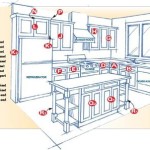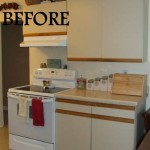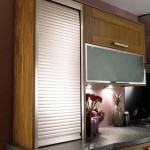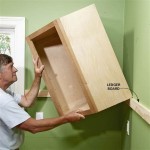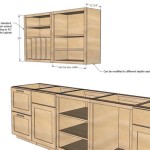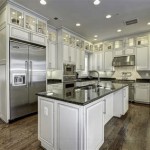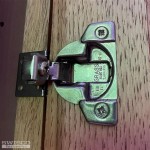Kitchen Cupboard Sink Unit: A Comprehensive Guide
The kitchen sink is arguably one of the most frequently used fixtures in any home. From washing dishes to rinsing produce, its functionality is paramount. A kitchen cupboard sink unit, more formally known as a sink base cabinet, provides the necessary support and enclosure for the sink, integrating it seamlessly into the overall kitchen design. This article will explore the various aspects of kitchen cupboard sink units, including their design considerations, materials, installation, and maintenance.
The functionality of a sink base cabinet extends beyond simply holding the sink. It offers a space for plumbing connections, storage for cleaning supplies, and can even accommodate features like pull-out trash containers or recycling bins. A well-designed sink base cabinet contributes significantly to the organization and efficiency of a kitchen.
Choosing the right sink base cabinet requires careful consideration of factors such as sink size and style, existing kitchen layout, storage needs, and desired aesthetic. Ignoring these factors can lead to inconveniences and potential design flaws.
The standard width for a kitchen sink base cabinet is typically 36 inches, designed to accommodate a standard-sized sink. However, variations exist to suit different sink sizes and kitchen layouts. Cabinets can range from smaller widths like 24 or 30 inches for smaller sinks or compact kitchens, to larger widths such as 42 or even 48 inches for double-bowl sinks or integrated workstation sinks. The depth of the cabinet usually matches the standard base cabinet depth, which is around 24 inches, while the height is typically 34.5 inches, allowing for a standard countertop height of 36 inches when the countertop is installed.
The internal configuration of a sink base cabinet is often dictated by the plumbing. The drainpipe, water supply lines, and potentially a garbage disposal unit all require space within the cabinet. This can limit the usable storage space. Manufacturers often provide innovative solutions, such as U-shaped drawers or pull-out organizers, to maximize the available space while working around the plumbing.
Key Point 1: Design Considerations for Sink Base Cabinets
Several design considerations are crucial when selecting a kitchen cupboard sink unit. These include the sink type, door style, material, and internal organization.
The type of sink significantly influences the base cabinet design. Undermount sinks, where the sink is installed beneath the countertop, require a solid surface countertop and a cabinet that can support the weight. Farmhouse sinks, which feature an exposed front apron, necessitate a specially designed base cabinet with a cutout to accommodate the sink's apron. Drop-in sinks, also known as top-mount sinks, are installed directly into a cutout in the countertop and generally have a more straightforward installation process.
Door style is another essential design element. Traditional cabinets often feature raised panel doors, while modern cabinets may have slab doors or Shaker-style doors. The door style should complement the overall kitchen design and reflect the homeowner's aesthetic preferences. The number of doors, whether a single door or double doors, and the presence of false drawer fronts also influence the overall appearance.
The material of the sink base cabinet affects its durability and appearance. Common materials include plywood, particleboard, and MDF (Medium-Density Fiberboard). Plywood is generally considered the most durable option, followed by MDF. Particleboard is the least expensive but also the least resistant to moisture. A moisture-resistant finish is crucial for any sink base cabinet material to prevent water damage and mold growth.
Internal organization is often an overlooked aspect of sink base cabinet design. Maximizing the usable space within the cabinet requires careful planning. Options include pull-out trash containers, recycling bins, adjustable shelves, and U-shaped drawers that wrap around the plumbing. These organizational features can significantly improve the functionality and convenience of the sink area.
Accessibility is also a vital consideration. For individuals with mobility challenges, a sink base cabinet with features like a lowered countertop and knee space can enhance accessibility and independence.
Key Point 2: Materials and Construction of Sink Base Cabinets
The materials used in the construction of a sink base cabinet directly impact its durability, longevity, and resistance to moisture. Different materials offer varying levels of performance and aesthetic appeal.
Plywood is a popular choice for kitchen cabinets due to its strength and stability. It consists of multiple layers of wood veneer glued together, providing excellent resistance to warping and cracking. Plywood is particularly well-suited for sink base cabinets, as it can withstand the moisture and humidity commonly found in the sink area. However, plywood is generally more expensive than other materials.
MDF (Medium-Density Fiberboard) is an engineered wood product made from wood fibers combined with resin and compressed under high pressure. MDF has a smooth, uniform surface, making it ideal for painting or laminating. It is less expensive than plywood but more susceptible to water damage. When used for sink base cabinets, MDF should be properly sealed and protected from moisture exposure.
Particleboard is the least expensive material option for kitchen cabinets. It is made from wood chips and resin, pressed together to form a sheet. Particleboard is less dense and less durable than plywood or MDF. It is also highly susceptible to water damage, making it a less suitable choice for sink base cabinets unless it is treated with a moisture-resistant coating.
The cabinet construction also plays a crucial role in its durability. Cabinets can be framed or frameless. Framed cabinets have a face frame that provides structural support and a decorative element. Frameless cabinets, also known as European-style cabinets, do not have a face frame, resulting in a cleaner, more modern look. Frameless cabinets often offer slightly more interior storage space.
The hardware used in the construction of the sink base cabinet, such as hinges, drawer slides, and door pulls, also affects its overall quality and functionality. High-quality hardware ensures smooth operation and long-term durability.
Key Point 3: Installation and Maintenance of Sink Base Cabinets
Proper installation is crucial for the longevity and functionality of a kitchen cupboard sink unit. While DIY installation is possible, professional installation is often recommended to ensure proper alignment and secure attachment.
Before installing the sink base cabinet, it is essential to ensure that the subfloor is level and structurally sound. Any unevenness should be corrected to prevent the cabinet from rocking or shifting. The plumbing connections should also be inspected and prepared for the sink installation.
The cabinet is typically attached to the wall using screws or bolts. It is crucial to use the appropriate fasteners and to ensure that the cabinet is securely anchored to the wall studs. Shims may be needed to level the cabinet and create a flush surface with adjacent cabinets.
Once the cabinet is installed, the sink can be installed according to the manufacturer's instructions. The plumbing connections should be carefully tightened to prevent leaks. A bead of sealant should be applied around the sink rim to create a watertight seal.
Maintaining a kitchen cupboard sink unit is essential for preventing water damage and extending its lifespan. Regularly inspect the cabinet for signs of moisture, such as water stains or mold growth. Wipe up any spills immediately to prevent them from seeping into the cabinet material.
Periodically check the plumbing connections for leaks. Tighten any loose fittings and replace worn-out washers or seals. Consider installing a leak detector under the sink to alert you to any water leaks.
Clean the interior of the cabinet regularly to prevent the buildup of dirt and grime. Use a mild detergent and water to clean the surfaces. Avoid using abrasive cleaners, which can damage the finish.
If the sink base cabinet is made of wood, consider applying a sealant or varnish to protect it from moisture. This will help to prevent water damage and extend the life of the cabinet.
Proper ventilation is also important for preventing moisture buildup inside the cabinet. Consider installing a vent to allow air to circulate and prevent mold growth.
By following these installation and maintenance tips, homeowners can ensure that their kitchen cupboard sink unit remains in good condition for many years to come.
The choice of sink, cabinet material, and hardware are all crucial considerations. Thoughtful planning and proper execution can significantly enhance the functionality and longevity of this essential kitchen component.

Sink Base Units Kitchen Diy Kitchens

Hampton Bay Shaker 30 In W X 24 D 34 5 H Assembled Sink Base Kitchen Cabinet Dove Gray Ksb30 Sdv The Home Depot

17 Ways To Organise Your Under Sink Kitchen Cabinet Houzz Ie

Mini Kitchen Cabinet And Sink Unit Kitchenette Buildsaver

How To Replace A Kitchen Sink Base Cabinet Vevano

Freestanding Kitchen Sink Cupboard

Double Bowl Sink Unit Stainless Steel Units Kitchen

Best 17 Under Sink Organizer In 2024 Our Favorite Finds

Restaurant Kitchen Cabinet Stainless Steel Sink Custom Made With Wash Basin China Equipment In Com

Outdoor Sink Cabinet Brown Jordan Kitchens
Related Posts

